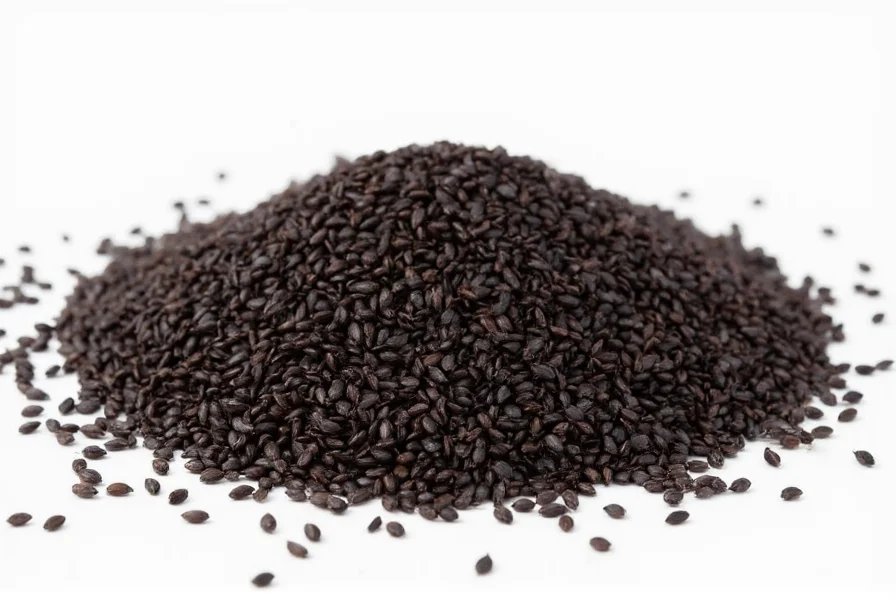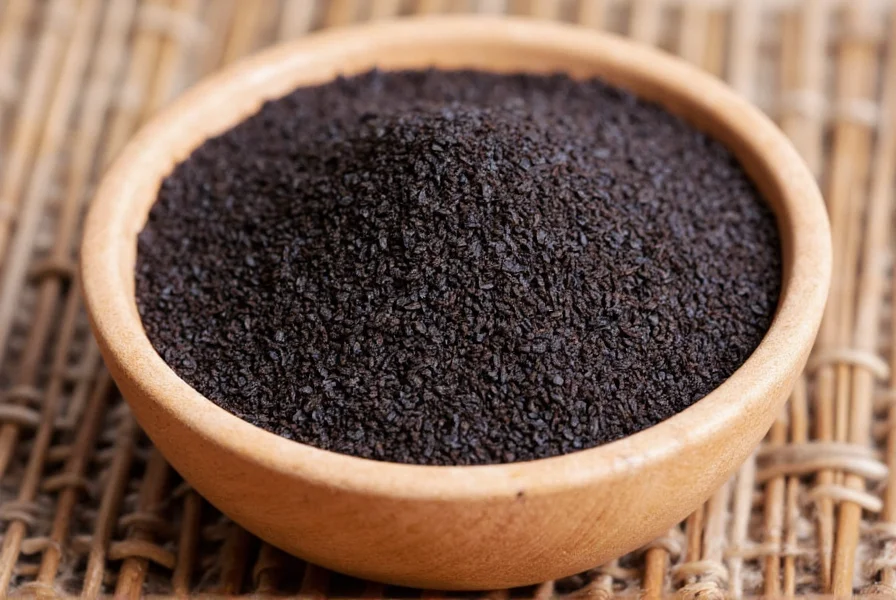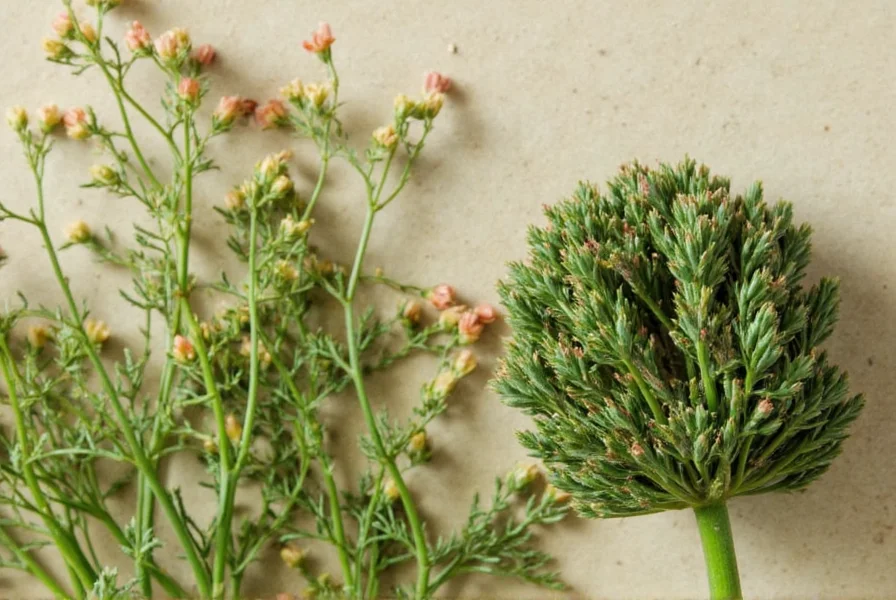For centuries, black cumin seed has been valued across Middle Eastern, South Asian, and Mediterranean cultures for both culinary and therapeutic applications. Ancient Egyptian artifacts reveal its presence in pharaohs' tombs, while Islamic tradition references its healing properties. Modern science has begun validating many traditional claims while establishing clear parameters for its potential health benefits.
Botanical Profile and Active Components
Nigella sativa belongs to the Ranunculaceae family and produces small black seeds containing over 100 bioactive compounds. The most extensively studied component is thymoquinone (TQ), which constitutes 30-48% of the essential oil. Other significant compounds include:
| Compound | Natural Concentration | Primary Properties |
|---|---|---|
| Thymoquinone | 0.5-1.5% of seed weight | Antioxidant, anti-inflammatory |
| Nigellone | Trace amounts | Anti-asthmatic, bronchodilator |
| Alpha-hederin | 0.1-0.5% of seed weight | Antimicrobial, immune-modulating |
| Fixed oil (linoleic acid) | 30-40% of seed weight | Skin health, anti-inflammatory |
Evidence-Based Health Benefits
While traditional medicine attributes numerous benefits to black cumin seed, scientific research provides varying levels of support for different applications:
Immune System Support
Multiple studies demonstrate black cumin seed's immunomodulatory effects. A 2020 systematic review published in Phytotherapy Research analyzed 27 clinical trials and found consistent evidence that Nigella sativa enhances immune cell activity, particularly natural killer (NK) cells and T-lymphocytes. The research suggests regular consumption may improve immune response to pathogens while reducing inappropriate inflammatory responses.

Antioxidant Properties
Research confirms black cumin seed ranks among the most potent natural antioxidant sources. A comparative study in the Journal of Agricultural and Food Chemistry measured oxygen radical absorbance capacity (ORAC) values, finding Nigella sativa scored 3,200 μmol TE/100g, significantly higher than many common spices. This antioxidant capacity helps protect cells from oxidative damage, potentially reducing risk factors for chronic diseases.
Respiratory Health Applications
Clinical evidence supports traditional use for respiratory conditions. A randomized controlled trial with 80 asthma patients published in Phytotherapy Research showed participants taking 500mg black seed oil capsules twice daily experienced significant improvement in pulmonary function tests compared to placebo after 4 weeks. The anti-inflammatory effects appear particularly beneficial for managing allergic responses.
Traditional Uses vs. Scientific Validation
Many traditional applications of black cumin seed have varying degrees of scientific support:
- Digestive health: Traditional use for indigestion and bloating has moderate support, with studies showing improved gastric emptying and reduced intestinal inflammation
- Skin conditions: Topical application for eczema and psoriasis shows promising results in small clinical trials
- Blood sugar management: Several studies indicate potential benefits for type 2 diabetes management, though larger trials are needed
- Cardiovascular health: Research suggests modest improvements in blood pressure and lipid profiles
It's crucial to distinguish between preliminary research findings and established medical treatments. While laboratory and animal studies show numerous potential benefits, human clinical evidence remains limited for many specific conditions.
Practical Usage Guidelines
Black cumin seed is available in several forms, each with different applications and considerations:
Forms and Recommended Applications
- Whole seeds: Ideal for culinary use; can be dry roasted to enhance flavor before adding to breads, curries, or pickles
- Crushed seeds: Better for extracting active compounds; suitable for mixing with honey or warm water
- Black seed oil: Concentrated form for therapeutic use; typically 1-2 teaspoons daily; can be taken directly or mixed with food
- Capsules: Standardized supplements providing consistent dosing; typically 500-1000mg daily
Dosage Considerations
Research studies have used varying dosages depending on the application:
- General wellness: 1-2g of seeds or 1 teaspoon of oil daily
- Specific therapeutic applications: 2-3g of seeds or 2-3 teaspoons of oil daily
- Supplement form: Typically 500-1000mg twice daily
For maximum benefit, consume black cumin seed products with food to enhance absorption of fat-soluble compounds. The seeds' bitter flavor can be balanced by mixing with honey or incorporating into savory dishes.
Safety Profile and Considerations
Black cumin seed is generally recognized as safe when consumed in food amounts. However, therapeutic doses require consideration of potential interactions:
- Pregnancy: Avoid therapeutic doses during pregnancy due to potential uterine stimulation
- Medication interactions: May interact with blood pressure medications, diabetes drugs, and immunosuppressants
- Allergic reactions: Rare but possible, particularly in individuals sensitive to plants in the Ranunculaceae family
- Topical use: Always perform a patch test before applying oil to larger skin areas
A 2021 safety review in Complementary Therapies in Medicine concluded that black cumin seed demonstrates a favorable safety profile at recommended doses, with most adverse effects being mild gastrointestinal symptoms. However, long-term safety data for high-dose supplementation remains limited.
Selecting Quality Products
Product quality varies significantly in the marketplace. Consider these factors when choosing black cumin seed products:
- Origin: Seeds from Mediterranean and Middle Eastern regions typically show higher thymoquinone content
- Cold-pressed oil: Look for "cold-pressed" or "first cold press" on labels to ensure maximum nutrient retention
- Dark glass packaging: Protects light-sensitive compounds from degradation
- Third-party testing: Reputable brands provide certificates of analysis verifying thymoquinone content
- Freshness: Check harvest or production dates; seeds lose potency over time
When evaluating supplements, look for standardized extracts specifying thymoquinone content (typically 2-5%). Pure black seed oil should have a distinctive pungent aroma and dark amber to greenish color.

Integrating Black Cumin Seed into Daily Routine
Practical ways to incorporate black cumin seed into your lifestyle include:
- Mix 1 teaspoon of oil with warm water and lemon first thing in the morning
- Add crushed seeds to bread dough or flatbreads before baking
- Create a honey-infused black seed remedy by soaking seeds in raw honey
- Use oil as base for salad dressings with lemon juice and herbs
- Add to smoothies to mask the bitter flavor while gaining benefits
Consistency matters more than high doses. Daily consumption of moderate amounts provides more sustained benefits than occasional high doses. Allow 4-8 weeks to notice potential effects, as many benefits develop gradually.
Current Research Limitations and Future Directions
While promising, current research on black cumin seed has several limitations:
- Many human studies have small sample sizes
- Standardization of active compounds varies between products
- Long-term safety data is limited
- Optimal dosing protocols remain unclear for many applications
Ongoing research focuses on improving bioavailability of thymoquinone through nano-encapsulation techniques and conducting larger, longer-term clinical trials for specific health conditions. The scientific community continues to investigate black cumin seed's potential role in integrative healthcare approaches.
What's the difference between black cumin seed and regular cumin seed?
Black cumin seed (Nigella sativa) and regular cumin (Cuminum cyminum) are completely different plants. Black cumin seeds are smaller, black, and have a more pungent, slightly bitter flavor compared to regular cumin's earthy, warm taste. They contain different active compounds and have distinct medicinal properties.
How long does it take to see benefits from black cumin seed?
Most research suggests consistent daily use for 4-8 weeks is needed to notice potential benefits. Some people report improved energy and digestion within 2-3 weeks, while immune and inflammatory benefits typically require longer consistent use. Individual responses vary based on health status and dosage.
Can I take black cumin seed with my medications?
Black cumin seed may interact with certain medications including blood pressure drugs, diabetes medications, and immunosuppressants. Always consult your healthcare provider before combining with prescription medications, especially if you have chronic health conditions or take multiple medications.
What's the best way to store black cumin seed products?
Store whole seeds in an airtight container in a cool, dark place for up to 1 year. Black seed oil should be kept in dark glass bottles in the refrigerator after opening to prevent oxidation. Proper storage maintains potency of the active compounds, particularly thymoquinone which degrades with light and heat exposure.
Is black cumin seed safe for long-term daily use?
Current evidence suggests black cumin seed is safe for long-term daily use at culinary and moderate therapeutic doses (up to 2g seeds or 2 teaspoons oil daily). However, research on very high doses over extended periods remains limited. Most traditional cultures have used it safely for generations at appropriate amounts.











 浙公网安备
33010002000092号
浙公网安备
33010002000092号 浙B2-20120091-4
浙B2-20120091-4